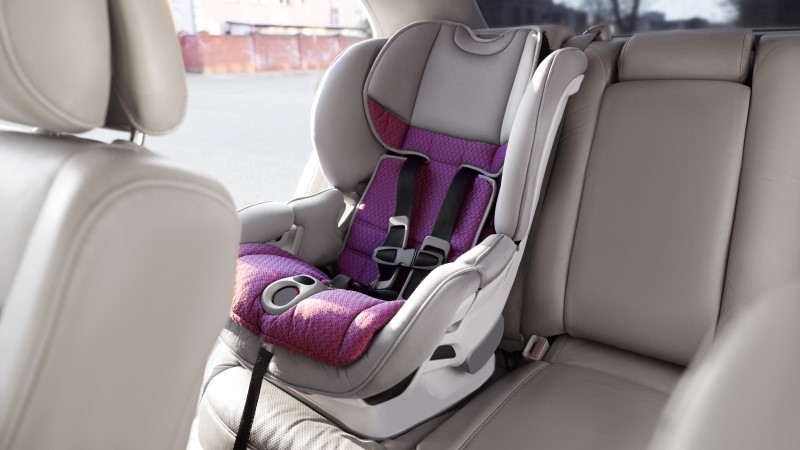How Dangerous Are Car Accidents for Children?
According to the Institute of Highway Safety (IIHS), car accidents account for 25% of all unintentional injury deaths for children aged 13 and under. Proper child safety seats have been shown to reduce child car collision fatalities dramatically. If you put a child in a booster seat in the rear, fatal injury risks are reduced by almost 75% for children up to age three and approximately 50% for children between four and eight years old.
Overall, child car accident fatalities have been halved from what they were in 1975. This correlates with the increase in awareness of child passenger safety, booster seats, and stricter laws on the roadways.
Even survivors are left scarred by car accidents, however. A study published by the National Center for Biotechnology Information (NCBI) showed that nearly half of all children who survived a car crash showed some symptoms of post-traumatic stress disorder (PTSD). And this is to say nothing of the physical injuries that a child may suffer.
Children must be protected. That’s why there are several child passenger safety laws across the country, with Ohio no exception.
What Are the Child Passenger Safety Laws of Ohio?
To ensure the safety of child passengers, Ohio has enacted several laws on safety seats, where the children are seated, and their weight class.
Children under the age of four or who weigh less than 40 pounds must be buckled into a safety seat when a motor vehicle is in motion. The children should be strapped in according to the safety seat’s instructions. Ideally, the safety seat will be rear-facing. If the children have outgrown their rear-facing safety seat, a forward-facing safety seat can be used instead.
Children between the ages of four and eight or otherwise shorter than 4’9″ must sit in a booster seat or other approved safety seat. If these children are under 40 pounds, they should be grouped into the category of children under age four.
Ohio law requires that all children between the ages of eight and 15 wear seat belts at all times, regardless of whether they are seated in the front or rear seats.
It is strongly encouraged that all infants and toddlers should ride in rear-facing safety seats. Only when the children outgrow these seats should they be switched to forward-facing safety seats.
Did you know that the majority of safety seats and booster seats are incorrectly installed? It is worth having your child’s car seat installed or approved by a professional to ensure it is installed correctly.
Why Are Booster Seats So Important?
Seat belts are designed with adults in mind. Standard seat belts endanger young children. A seat belt is only considered an effective life-saving mechanism when it fits properly across the individual’s shoulders and chest.
Most seat belts are not designed for children under 4’9″. If a child is seated in a seat designed for an adult, an accident could cause the seat belt to injure the child. Injuries to children using adult seat belts include wounds to the stomach, strain on the spine, and neck breaks.
A booster seat negates these dangers. Unlike a seat designed for adults, the booster seat is designed for children of a certain size, allowing them to ride more comfortably and safely in the automobile. They may be too big for the child safety seats they grew up with and too small for regular adult seats, but a booster seat is a happy in-between.
What is Ohio’s OBB Program?
Ohio Buckles Buckeyes (OBB) is a statewide child passenger safety program that seeks to provide safety and booster seats to eligible, low-income families. The goals of the program are to increase child passenger safety, ensure the proper installation of car seats, and raise awareness of the usefulness of child safety seats.
To obtain a seat from the OBB Program, income-eligible families must attend child passenger safety (CPS) training and educational classes. In these classes, the parent or guardian will receive helpful information about installing a car seat and keeping their children safe. To learn more, contact the OBB Program office of your county.
What Are the Penalties for the Failure to Provide a Proper Safety Seat for a Child Passenger?
Child passenger car seat laws are challenging to enforce and not all-encompassing. For example, taxis, rideshares, police cars, and other public transportation do not always require safety seats or booster seats.
The police are not permitted to stop a car for the sole reason that they suspect an underage passenger is not in the proper car seat. A ticket can only be written for the lack of a safety seat if the law enforcement officer pulled the driver over for a different violation.
The failure to use a proper child seat can be charged as a minor misdemeanor. The fines are between $25 and $75 for the first offense. On a second offense, it is upgraded to a fourth-degree misdemeanor with a penalty of up to $250 and the potential for jail time.
Schedule a Free Consultation with Experienced Car Accident Attorneys Today
Child safety seats save lives. Protect your loved ones by ensuring they’re buckled up, safe, and secure.
Our law firm offers an abundance of legal services to clients and their families who’ve experienced personal injury and tragedy. To learn more about what we can do to aid you during your most difficult times, please contact our law firm to schedule a free case evaluation (937) 400-0000.



